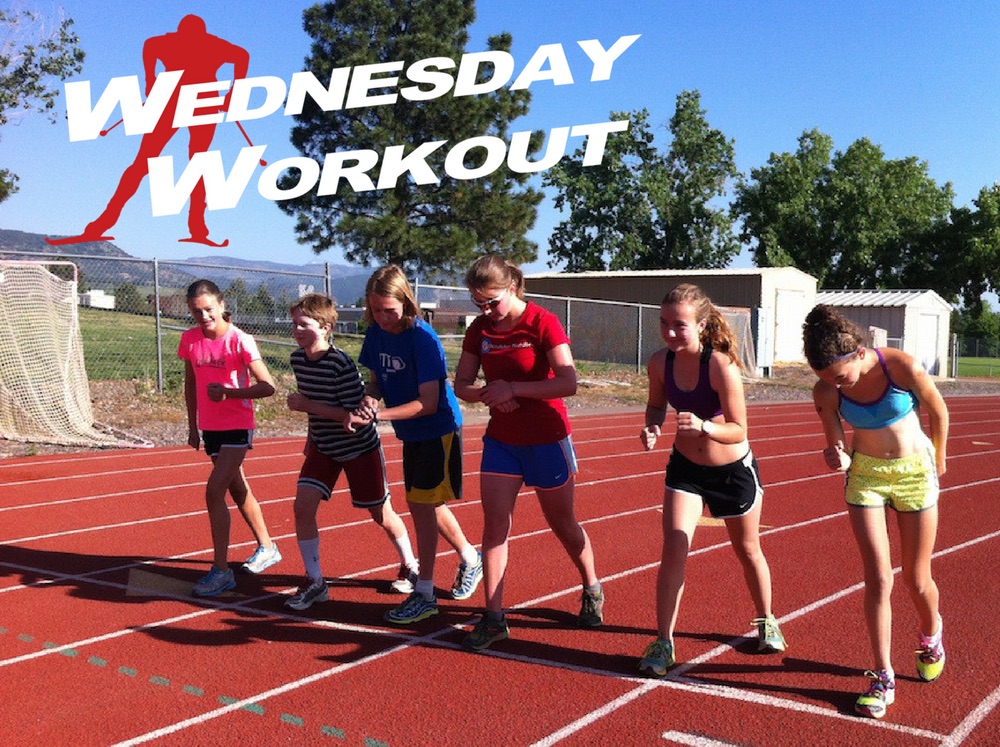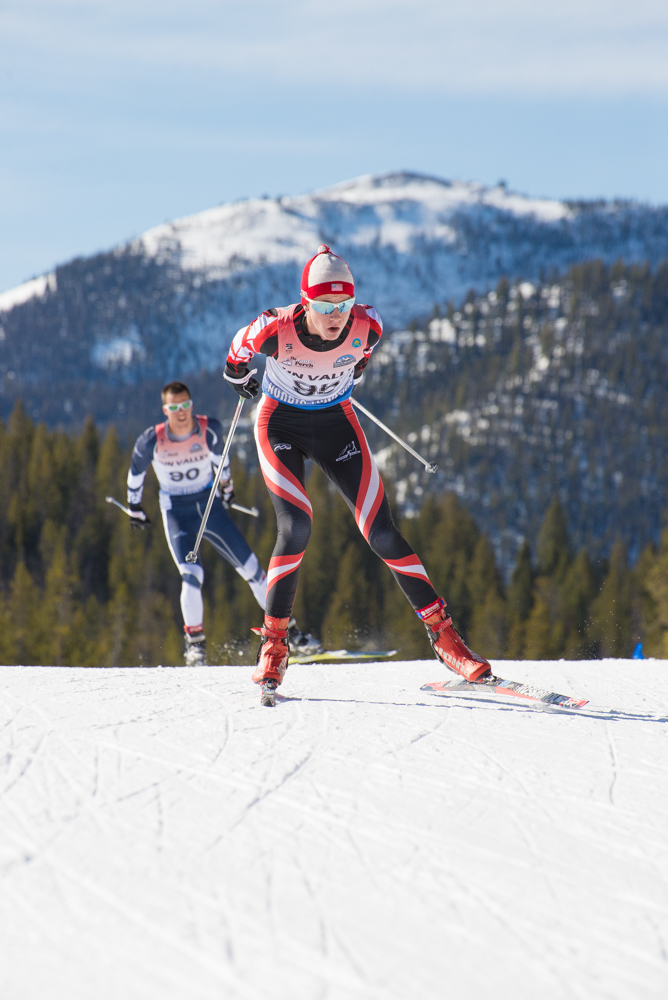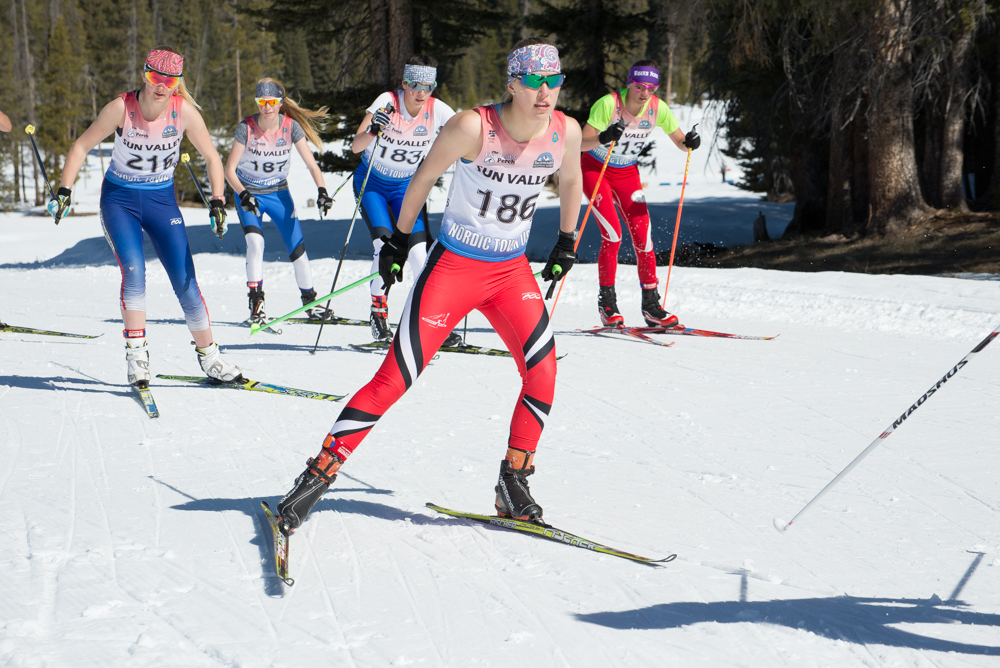
FasterSkier recently caught up with the Colorado-based Boulder Nordic Junior Racing (BNJR) Team and its head coach Adam St.Pierre for a workout tailored to junior skiers, but sure to improve pacing and get hearts racing for athletes of all ages.
***
The national team athlete, the college competitor, the up-and-coming junior, the still-got-it master — if there is one training tool most of these nordic skiers know of, it’s the 3,000-kilometer time trial on the track.

However, while 3 k times are certainly a useful method of comparing an athlete’s baseline fitness at multiple levels, Boulder Nordic Junior Racing (BNJR) Team’s head coach Adam St.Pierre indicates the performance test is merely Step 1 for junior skiers looking to further develop.
“If you look at how many juniors in particular just go out at the start of a 5 k race and are just cooked within the first k, by putting them on a track and teaching them how small the changes in effort are to achieve different paces is a pretty powerful tool,” St.Pierre said on the phone from Boulder, Colo.
For St.Pierre, the 3 k is not just a test of fitness at summer’s onset and fall’s closure, but also a tool for teaching athletes to pace and track their progress. Using his athletes’ spring 3 k time trial results, he computes his athletes per 100-meter pace, which is the pace his athletes then base all of their summer and fall interval times off of.
“What a lot of athletes end up discovering is that the per 100 meter pace of a 3 k isn’t that hard,” St. Pierre said. “They say, ‘But I went out way faster than that,’ and I say ‘Yeah, you did, then you slowed down.’ So using a performance metric to determine your workloads is ideal.”
Another reason St.Pierre likes to have his juniors hit the track regularly? The opportunity for coaching surveillance and the occasional interval.
“I think it’s important, too, that you see your coach isn’t just some out of shape old dude,” St.Pierre said. “With the track, I have the ability to hop in and run by someone for a lap or an interval or half a lap, whatever it takes to help them hit their targets.”
The Workout
Purpose: Complete a progression of track workouts over the summer in order to improve pacing. Indicators of improvement are times from a 3 k time trial at the beginning of the summer compared to 3 k time trial times run by the end of the fall, as well as an increase in the number of repeats athletes can complete during each consecutive track workout.
Warmup: 20-30 minutes
- 5 minutes running off the track
- “Wake up muscles” next by doing a series of lunges: forward, backward, and lateral; follow up with squats
- 4 laps around the track
- High knees, butt kicks, karaoke and skips during straight aways, jog corners
- “Do each drill forwards and backwards!” St.Pierre said.
- 50- to 100-meter barefoot strides/accelerations
*(St.Pierre’s favorite) set: 400-meter repeats for 30 minutes at 3 k race pace
Recovery equals the same amount of time as interval or until heart rate returns to Level 1
Sample progression (all done at 3 k race pace):
- Week 1: 200-meter repeats for 3-5 k
- Week 2: 300-meter repeats for 3-5 k
- Week 3: 400-meter repeats for 3-5 k
(Continue adding until you reach 1,000-meter repeats for 5-7 k)
Cool down: 15-20 minutes
- 5-10 minutes of aerobic running
- 5-10 minutes core circuit
- Static stretching
Total time: 90 minutes
*An athlete must complete a 3 k time trial on the track in order to calculate their ideal interval effort and pace (St.Pierre takes an athlete’s per 100-meter time based off their 3 k time.

BNJR Coach and Athlete Advice:
- Work up to what you want. “I enjoy this track workout because it helps me get used to doing a 3 k, and pushing hard for that long by working up to that,” BNJR skier Emily Pickner wrote in an email. “Intervals are easier for me to do because they are usually shorter, so by the time we get to the 3 k, I can look at it as all the intervals put together.”
- Mobility is a must. “Lots of skiers run like robots!” St.Pierre wrote in an email indicating that in order to reap the complete benefits of the track workout, “include some drills within the warm-up to elevate your HR [heart rate], increase your range of motion and improve your run mechanics.”
- Use the race to break down the pace. Going out too hard is a game all too familiar with nordic athletes, junior and senior racers alike. “Basing paces on 3 k time makes them an accurate estimate of what you can do,” Emil Graf, another BNJR racer, wrote in an email. “Trust the goal paces … Also, make sure to set a solid 3 k time at the beginning.”
- Progress takes patience. “I think the overarching philosophy for my training and coaching is just progress over time,” St.Pierre said. “Regularly checking that you are improving and then being willing to make changes if you want — sometimes those changes are you need to train more and sometimes those changes are you need to train less, or re-prioritize — that’s an important concept.”
Gabby Naranja
Gabby Naranja considers herself a true Mainer, having grown up in the northern most part of the state playing hockey and roofing houses with her five brothers. She graduated from Bates College where she ran cross-country, track, and nordic skied. She spent this past winter in Europe and is currently in Montana enjoying all that the U.S. northwest has to offer.



